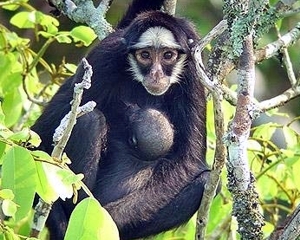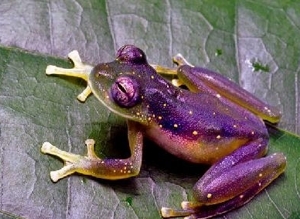

Destinations
Experiences
 |
L A
D A T C O T O U R
S |
 |
||||||||
| HOME | South America | Falkland Islands | Antarctica | Unique Destinations |
Unique Experiences |
Newsstand | ||||
 |
BRAZILIAN
RAINFOREST
Cristalino |
 |
ABOUT CRISTALINO JUNGLE LODGE FLORA & FAUNA - in their own words:
WILDLIFE
The Amazon is home to more species of plants and animals than any other terrestrial ecosystem on the planet - perhaps 30% of the world's species are found there. Its biodiversity is astounding: a single bush in the Amazon may have more species of ants than the entire British Isles, while a lone hectare of forest may have more than 480 species of trees.
The Cristalino Jungle Lodge offers one of the most unique and exciting opportunities for wildlife viewing in the entire world, containing a great variety of medium to low altitude eco zones, different types of forest cover, lakes, micro habitats, around 600 species of birds and diverse neo-tropical wildlife. From the carnivorous predators at the top of the food chain such as the Jaguar, Harpy Eagle and Giant Otter to the herbivores at the bottom of the pyramid like the Capybara and Agouti, all of the organisms which took thousands of years to evolve and which make Amazonia unlike any other biome in the world are still alive and doing well within the reserve.
Actually , it is everything in between the aforementioned extremes which creates the joy of a stay at the Cristalino. Its location near the junction of two rivers - one a “White-water” and the other a “Black-water” river - gives the reserve a combination of two different soil types which in turn translates into a wonderful diversity of topography, trees, orchids and bromeliads, terrestrial mammals, monkeys, bats, birds, reptiles and fish, butterflies and other insects. Encounters with a Jaguar are dependent upon persistence and luck but do happen a couple times per year. Fortunately, for the visitor with just a few days to devote, most of the other wonderful creatures of the Cristalino are able to be seen more predictably with the help of our guides.
Whether it be from a quiet boat ride on the Cristalino River, a nature walk on one of the many trails in the reserve, or from atop the 50 meter observation tower, the Cristalino Reserve will never fail to amuse and amaze the observant visitor.AVIAFAUNA
Currently there are approximately 600 avifauna species in the region, with new species still being found. This amounts to 1/2 of the avifauna in the Amazon and 1/3 of the Brazilian avifauna, which makes this one of the most special places for birding in the Amazon.
BUTTERFLIES
The Cristalino Region has over 1,800 species of butterflies, skippers and moths.MAMMALS
This area is home to fascinating mammals, such as Brazilian Tapirs, Peccaries and Capybaras, curious herbivores of the rainforest. They move easily and rapidly through the vegetation due to their short, sturdy legs and streamlined body. These animals are very attracted to the water and are usually seen along the Cristalino riverbanks.Other mammals include the River Otters and the Giant Otters, who are excellent swimmers and fish catchers. On the forest ground, usually Porcupines, Sloths, Brocket Deer, Pacas, Opossums, Anteaters, Agoutis and Tayra are found, as well as the Jaguars, Small Cats and Wild Dogs, who are both magnificent and reserved.
The forest is also home to many species of monkeys, such as the White Whiskered Spider Monkey, an endemic specie that has a peculiar white colored face. Other monkeys include the Night Monkey, Dusky Titi Monkey, Brown Capuchin, Red-handed Howler Monkey and the handsome and endemic Red-Nosed Bearded Saki Monkey (in the museums called "white nosed"). The Red Howler Monkeys are also found in the Alta Floresta Region.
VEGETATION
The Cristalino Region's vegetation has different and interesting formations, creating excellent scenarios to discover the Amazon.FLORA CRISTALINO PROGRAM
The Cristalino Ecological Foundation (Fundação Ecológica Cristalino) together with Royal Botanic Gardens, Kew (UK) and Mato Grosso State University (UNEMAT) are currently studying the forests and plants in this region. So far, over 1,200 different species of plants were found - three of them were new to science.
The program has classified eight different types of forests and transitional forests based on the UNESCO international classification and mapping of vegetation, the Brazilian Geography National Institute (IBGE) and publications from Pires & Prance and Veloso et al.
What is interesting about the flora in this region is that each type of vegetation usually has endemic species of wildlife associated with it. This contributes greatly to the number of species that can be seen by birdwatchers and eco-tourists!